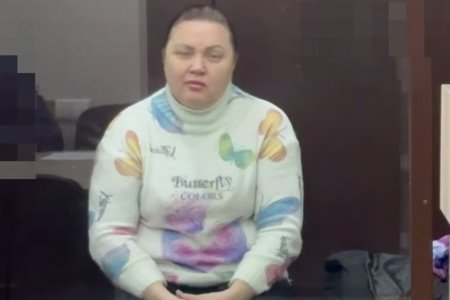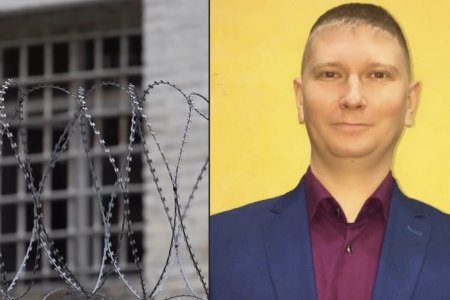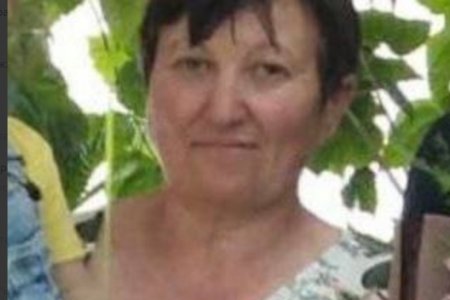![Фото з телеграм-каналу Володимира Зеленського [обмін полоненими] Photo from Volodymyr Zelensky’s telegram channel](https://khpg.org/files/img/1608820180.jpg)
— The KHPG has been collecting information about prisoners and missing persons since the beginning of the full-scale invasion and, in fact, even earlier. Every day, the KHPG database is filled with new information about Ukrainians in Russian captivity. What did we manage to find out? How many are there? Different Ukrainian authorities give different figures…
— Russia is hiding data. The approximate number of prisoners of war announced by our state is 10 thousand. This figure is relatively stable since exchanges are taking place, and at the same time, people continue to be captured, and new service members disappear without a trace. At the same time, there is such a thing as “confirmed prisoners” — this is when the International Red Cross or Russian authorities confirm that a specific person is being held captive by them. They do not always say where exactly they are being held, but there is at least confirmation that the person is in Russia or the occupied territories of Ukraine. Consequently, the place of detention of approximately six thousand prisoners of war is known. As for civilians, everything is much more complicated here. Regarding civilians, Russia is trying to hide information as much as possible. As of early March, the whereabouts of 1,863 civilian prisoners were known. But in reality, there are much more of them. Here, the numbers are entirely different. Our Center for Civil Liberties colleagues believe seven thousand of them exist. We believe that there are even more. The Coordination Headquarters for the Treatment of Prisoners of War last summer announced that there were 14 thousand civilian prisoners. Last year, at one of the first meetings of the PACE October session, the head of the Ukrainian delegation, Maria Mezentseva, announced a figure of about 66 thousand — that includes all: prisoners of war, civilian prisoners, and missing persons. As of February 2, the Register of Persons Missing under Special Circumstances, maintained by the Ministry of Internal Affairs, contained about 63 thousand people. However, almost 10,300 were removed from the register. As of early May, the KHPG database had 4,290 missing Ukrainians — 3,931 military personnel and 359 civilians. We documented that 5,536 military personnel and 503 civilians were definitely in captivity.
— What do we know about the places where our prisoners are being held?
— As I said, we know about the whereabouts of approximately six thousand prisoners of war. Where and in what conditions the rest are being held is unknown. As for civilians, it is even worse: the whereabouts are known only for a small number. The list of institutions where it is known that Ukrainians are being held is constantly growing. Last year, our database had 31 places of deprivation of liberty in Russia and another 14 in the occupied territory of Ukraine. Now, in the Russian Federation, we already count 127 places of deprivation of liberty where Ukrainians are being held. And there are even more. Seven or eight institutions we did not know about before have been discovered in the last month alone. People have been found who are being held captive there. Either the Red Cross has confirmed their place of detention, or the exchanged prisoners have told us about it. Everyone who returns from captivity tells us which institutions they were in and with whom. They name all the names they remember. Thus, the list of civilian and war prisoners is growing.
— Where are Ukrainian prisoners sent?
— Very far. Recently, for example, it was discovered that one person is in Minusinsk. This is the Krasnoyarsk Territory. Many people are in Saratov, Mordovia, in the European part of the Russian Federation. But our prisoners are still being sent further. Saratov is already far away, and Kamyshin is in the Volgograd Region. There are more and more people beyond the Urals. There are Ukrainian prisoners in Grozny. We know of 199 such people. As far as we know, they are treated normally there: they are not tortured, they are not beaten, they are not humiliated, and they are allowed to call home.
— So, the detention conditions differ depending on the prison and the region?
— Well, there is Pre-trial detention center No. 1 in Grozny. The attitude towards our prisoners there is much better than in other places. There was a case when the Chechens took four marines from another colony, where they were tortured a great deal. The Chechens generally have this attitude: we keep yours humanely, and you keep ours in normal conditions. I don’t have evidence, but I think that’s how it is.
— If conditions are more or less normal in Grozny, where are they worse?
— In Mordovia. This is pre-trial detention center No. 10 in the village of Udarny, Zubovo-Polyansky district. It’s also terrible in pre-trial detention center No. 2 in Taganrog. It is a special place for torture, where they break those who don’t want to give the testimony the Russians need or change it in court. Such people are taken to Taganrog to be tortured again so that they will forsake their court testimony, which contradicts what they said under torture during the investigation.
Another colony in the city of Galich, in the Kostroma region. They torture there, almost like in IK No. 10. There is Kamyshin, Volgograd region. There is Pakino. In fact, torture is practiced in most colonies. The only difference is in the scale. In some colonies, torture is a way of life. Not a single day goes by without it. They beat prisoners every day. And very often, this beating turns into torture.
— Is this torture a continuation of the Soviet prison tradition? Is there some additional intention here?
— It is not only a tradition. It is also an attempt to break the prisoner physically and morally. To bring his health to such a state that when he is exchanged, he will no longer be able to fight. Another goal is to break him morally. People there are extremely humiliated and forced to sing the Russian anthem and patriotic Russian songs ten times a day.
— I heard from former prisoners that many moved between colonies. Why? To cover their tracks? Is there any logic in these movements?
— Over time, they are moved further and further from the front line, deeper into Russia. Not all of them, but this trend is noticeable. And the further they are, the worse the conditions of detention. We traced this using the example of the 36th Brigade. But I am not sure that I can generalize this to all prisoners.
— Describe the path of the prisoners from the 36th Brigade…
— First — Olenivka. Then — Taganrog. Next — one of the colonies in the Bryansk, Kursk, Belgorod, or Kostroma regions in the European part of Russia. And then they are taken to Mordovia. At the same time, they can still be transported around Russia — not one colony, but two or three. In the end, there are five places.
— Who do Russians treat the worst in captivity?
— Azov soldiers, marines, snipers, artillerymen... Officers are treated worse than privates. As for women, I can’t say that they have it any easier — other things arise there, sexual violence… True, men are also subjected to it but hardly talk about it.
— What part of prisoners of war are put on “trial”?
— Most are held without trial. But the number of people who are put on trial is growing. Our database already has information about 740 convicted prisoners — 514 military and 226 civilians. In fact, there are more. It should be borne in mind that convicted prisoners are also exchanged. For example, I highly appreciate the efforts of the Coordination Headquarters for the Treatment of Prisoners of War in the fact that it was able to exchange prisoners for life. Thirty-six such prisoners have already been exchanged. There are a few people left. There are four colonies where those with such sentences are held. These are two colonies in Mordovia: in IK No. 1 in Sosnovka, three such prisoners of war remain, and in IK No. 6 in Torbeevo, five more lifers. There is also the so-called “Black Dolphin” in the Yamalo-Nenets District, and this colony holds two or three more life-sentenced prisoners of war. There used to be such Ukrainians in the “White Swan” prison in Solikamsk, Perm Territory, but now there are no more there. That is, 10-11 people remain. Let’s hope these people will be exchanged. Among the civilian prisoners, I know only one lifer. He is still waiting for an appeal. In general, information about people in Russian captivity is becoming more and more every day. The work must be done continuously until we discover the fate of every person captured or disappeared.
The coalition of human rights organizations within the framework of the PEOPLE FIRST! Campaign demands the release of prisoners of war as a result of Russian aggression against Ukraine, including those convicted by Russian courts.
If you are a relative of a person who disappeared under special circumstances, a prisoner of war, or a civilian prisoner, and you need help, call the Missing Persons Hotline at 0-800-20-2402. Calls are free.



